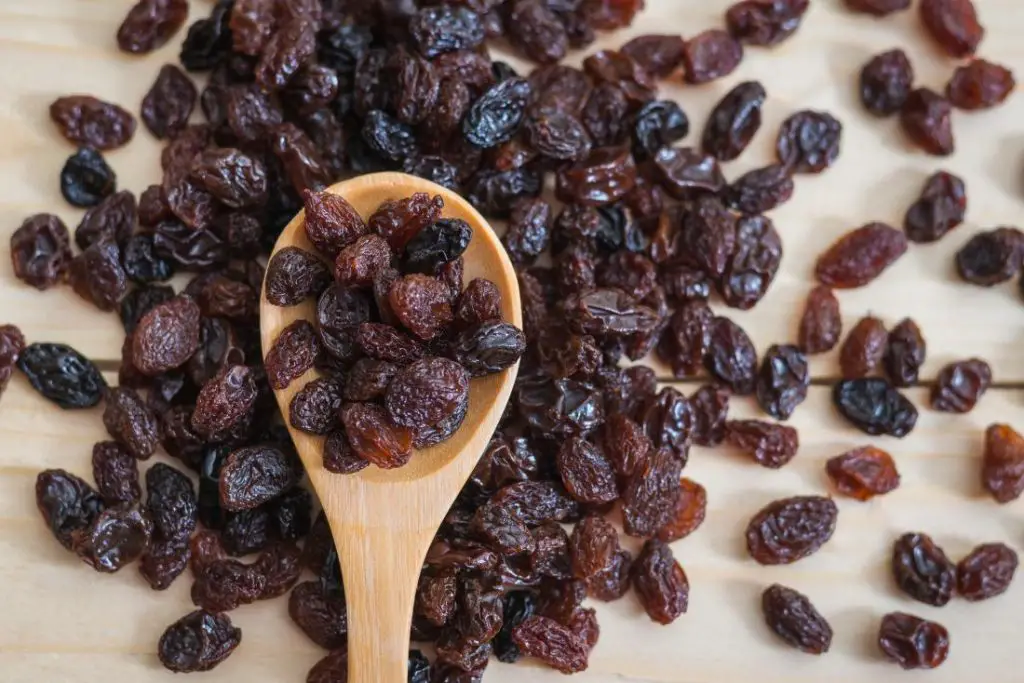
Huckleberries are small, round berries that grow wild in certain regions, known for their unique tart and sweet flavor. These delicious berries are often used in various culinary creations, such as jams, pies, and desserts. If you find yourself with a bountiful harvest of huckleberries or simply want to preserve their freshness for later use, freezing them is an excellent option. Freezing huckleberries allows you to extend their shelf life while retaining their vibrant color and natural flavors. Whether you want to enjoy huckleberries in smoothies, baked goods, or simply as a topping for your favorite dishes, freezing ensures that you can savor the taste of these delightful berries all year round. So, whether you’ve foraged your own huckleberries or found them at a local market, freezing is the perfect way to preserve their goodness and have a stash of these flavorful berries at your fingertips whenever you desire.
Here are the steps to freeze huckleberries:
- Step 1: Rinse the huckleberries in cold water and remove any stems or leaves.
- Step 2: Spread the huckleberries out in a single layer on a baking sheet or tray.
- Step 3: Place the huckleberries on the baking sheet or tray in the freezer for about 2 hours.
- Step 4: Once the huckleberries are frozen, transfer them to a resealable freezer bag.
- Step 5: Label the container or bag.
Step 1: Rinse the huckleberries in cold water and remove any stems or leaves.
Rinsing the huckleberries in cold water helps to remove any dirt, debris, or pesticides that may be on the surface of the fruit. It is important to rinse the huckleberries even if they were purchased from a store, as there may still be some residue from handling or transport.
Removing any stems or leaves is important because they are not typically consumed and can affect the texture and flavor of the frozen huckleberries. Additionally, stems and leaves can cause the huckleberries to spoil more quickly in the freezer.
To remove the stems and leaves, simply hold the huckleberry by the stem and gently twist it off. Alternatively, you can use a pair of scissors or a small knife to cut off the stem.
Can I freeze huckleberries without washing them first?
It is not recommended to freeze huckleberries without washing them first. Huckleberries can harbor bacteria and dirt that can cause spoilage and affect their quality. Washing huckleberries before freezing removes any debris and helps preserve their freshness. It’s also essential to ensure the huckleberries are completely dry before freezing to prevent the formation of ice crystals. Properly washing and drying the huckleberries before freezing helps maintain their taste and texture when used in recipes later.
Do I need to blanch huckleberries before freezing them?
No, blanching is not necessary when freezing huckleberries. Simply wash the berries, pat them dry, and place them in a freezer-safe container or plastic bag. Be sure to remove as much air as possible from the bag before sealing it to prevent freezer burn.
Step 2: Spread the huckleberries out in a single layer on a baking sheet or tray.
Spreading the huckleberries out in a single layer on a baking sheet or tray is an important step in freezing them because it allows the huckleberries to freeze evenly and prevents them from sticking together.
If the huckleberries are frozen in a clump, it can be difficult to separate them later on when you want to use them. By spreading them out in a single layer, you ensure that each berry will freeze separately, making it easier to portion them out when you’re ready to use them.
Using a baking sheet or tray is ideal because it provides a flat surface and allows for air to circulate the huckleberries, which helps them freeze faster and more evenly. Once the huckleberries are frozen, you can then transfer them to a freezer-safe container or bag for longer-term storage.
Step 3: Place the huckleberries on the baking sheet or tray in the freezer for about 2 hours.
This step allows the berries to freeze completely and reach a temperature of around -18°C (0°F) or lower, which is the ideal temperature for long-term storage in the freezer.
Freezing the huckleberries for about 2 hours is a general guideline, but the actual freezing time may vary depending on factors such as the size and quantity of the huckleberries, the temperature of the freezer, and the type of container or tray used. It is important to ensure the huckleberries are completely frozen before transferring them to a freezer-safe container or bag.
It’s important to note that if the huckleberries are not frozen completely, ice crystals can form on the surface of the berries during storage, which can cause them to become mushy or lose their flavor. Therefore, it’s essential to ensure that the huckleberries are completely frozen before transferring them to a freezer-safe container or bag.
Step 4: Once the huckleberries are frozen, transfer them to a resealable freezer bag.
After the huckleberries are completely frozen, they should be transferred to a resealable freezer bag or an airtight container. A resealable freezer bag or an airtight container will help to keep the huckleberries fresh and prevent freezer burn. It’s recommended to use a freezer-safe bag or container that is designed for long-term storage in the freezer.\
What are the best-recommended bags and containers for freezing huckleberries?
- Freezer bags: Look for heavy-duty, resealable freezer bags that are designed for long-term storage in the freezer. Make sure they are labeled “freezer bags” and not just “storage bags,” as the latter may not be suitable for freezing.
- Vacuum-sealed bags: Vacuum-sealed bags are a great option for freezing huckleberries as they help to prevent freezer burn and keep the fruit fresh. You can use a vacuum-sealer machine to seal the bags, or you can use special zip-top bags that are designed for vacuum sealing.
- Airtight containers: Airtight containers, such as plastic containers with lids, are another good option for freezing huckleberries. Look for containers labeled “freezer-safe” with a tight-fitting lid to prevent air and moisture from getting in.
No matter what type of bag or container you choose, make sure it is clean and completely dry before adding the huckleberries. Also, be sure to leave some room at the top of the bag or container for the huckleberries to expand as they freeze.
Step 5: Label the container or bag.
Labeling the bag or container with the date and contents is important for keeping track of when the huckleberries were frozen and what they are. This information will help you use the oldest frozen huckleberries first and avoid any confusion about what is in the bag or container.
When labeling, be sure to write the date of freezing, the name of the fruit (in this case, huckleberries), and any other relevant information, such as the amount or weight of the fruit. This will help you keep track of the frozen huckleberries and ensure that you use them before they expire.
Other related questions
How do you thaw frozen huckleberries?
To thaw frozen huckleberries, remove the desired amount from the freezer and place them in a strainer or colander over a bowl to catch any excess liquid. Allow the huckleberries to thaw at room temperature for 30-60 minutes or until they have fully thawed. Alternatively, you can thaw them in the refrigerator overnight. Do not thaw frozen huckleberries in warm water or the microwave, as this can cause them to become mushy or lose their flavor. Once thawed, the huckleberries can be used in a variety of dishes, such as pies, jams, smoothies, and baked goods.
What is the best way to thaw frozen huckleberries?
The best way to thaw frozen huckleberries is to transfer them to the fridge and let them defrost overnight. This slow thawing process helps prevent the berries from becoming mushy or losing their texture. Avoid thawing at room temperature or using a microwave, as this can cause the huckleberries to become watery or lose flavor. Once thawed, use them immediately or store them in the fridge for up to 2 days.
Can you refreeze frozen huckleberries?
Yes, you can refreeze huckleberries if they have been properly thawed in the refrigerator and have not been sitting at room temperature for more than two hours. However, repeated thawing and freezing can affect the quality and texture of the berries, so it is best to avoid doing this if possible. It is recommended to use the thawed huckleberries within a few days of thawing to ensure their best quality.
Can you microwave frozen huckleberries?
It is possible to microwave frozen huckleberries, but it is not recommended as it can cause them to become mushy and lose shape. It is better to thaw them in the refrigerator or at room temperature to preserve their texture and flavor.
How long can I keep frozen huckleberries in the freezer?
Properly frozen huckleberries can last for up to a year in the freezer. It’s best to store them in an airtight container or freezer bag to prevent freezer burn and maintain their quality. Label the container with the date of freezing, so you know how long they have been stored. Thawed huckleberries should be used within a few days.
Do freezing huckleberries lose their moisture?
Yes, freezing huckleberries can cause them to lose some of their moisture, especially if they are not stored in an airtight container or bag. However, this moisture loss is typically minimal and does not affect the taste or quality of the fruit. The huckleberries may become slightly softer after thawing, but they should still be flavorful and delicious.
Can I freeze huckleberries that have been sweetened or mixed with other ingredients?
Yes, huckleberries can be frozen after being sweetened or mixed with other ingredients. However, it’s important to ensure the mixture is thoroughly chilled before freezing. The sugar or other ingredients can affect the texture and quality of the huckleberries, so it’s best to use them in recipes that require blending or cooking after thawing.
Can I use frozen huckleberries in recipes that call for fresh ones?
Yes, you can use frozen huckleberries in recipes that call for fresh ones. However, keep in mind that the texture may be slightly different due to the freezing process. For recipes that require whole huckleberries, such as muffins or pies, it’s best to use them frozen to prevent them from breaking apart. For recipes that require mashed or blended huckleberries, such as jams or smoothies, thaw the berries first. Adjust the recipe’s cooking time or liquid content as needed, as frozen huckleberries can release more liquid than fresh ones.
Can I use frozen huckleberries in smoothies and baked goods?
Yes, frozen huckleberries can be used in smoothies and baked goods. Thaw the huckleberries before using them and drain off any excess liquid. Frozen huckleberries can be used in place of fresh huckleberries in most recipes.
Does freezing blueberries destroy their antioxidants?
No, freezing blueberries does not destroy their antioxidants. Freezing blueberries can help to preserve their nutritional value. Antioxidants are stable compounds that are not affected by freezing, so frozen blueberries are still a good source of these beneficial compounds.
How do you make frozen huckleberries not soggy?
To prevent frozen huckleberries from becoming soggy, first make sure to drain off any excess liquid after thawing them. Then, toss them in a small amount of flour or cornstarch before using them in a recipe. This will help to absorb any excess moisture and prevent the berries from becoming too soggy or watery when baked.








